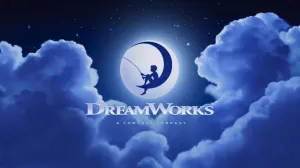Over the course of his decade producing How I Met Your Mother, Carter Bays helped craft a sprawling tale of New York City, filled with dozens of interconnected characters and full of heart and humanity. Distilling that humble, earnest epic into a single novel might seem like an impossible order, but that’s what he has done — this time without a cast and writers’ room behind him — in The Mutual Friend. It’s a story that’s impossible to summarize effectively, but centers on a bunch of New Yorkers, many of whom have little in common, and how their lives and stories intersect.
Videos by ComicBook.com
The book is told from an omniscient narrator’s perspective, but about 50 pages in, readers learn that it’s a first-person narrative…which means that for the rest of the book, you might find yourself wondering just who is telling you this story.
“There’s probably a number of reasons behind it,” Bays told ComicBook.com of the choice. “And I feel like I don’t even want to divulge all of them just to save people the surprises in the book. But ultimately, it was exploring the idea of an omniscient narrator, which is something that fiction has had as long as there’s been fiction. And the idea of this God’s eye view of a story and why this omniscient narrator decides to tell this particular story about this particular person, I’ve always been fascinated by that and especially the idea of a character with all the information, this narrator who was able to tell the story.”
“I thought it was especially interesting in this day and age when information is actually gathered and stored in such massive quantities,” Bays continued. “I picture it in the side of a mountain somewhere, in some missile silo, there’s all these banks and banks of hard drives that just have everything on them. The idea that if you were able to somehow have this kind of God’s eye view of the world and see all of that information, what stories would you see there? What connections would you make that no one in a million years would make otherwise without having that?”
As with How I Met Your Mother, Bays crafts a story filled with humor, heart, character, and romance — and predicates it on a mystery without ever feeling like a “mystery novel.” Who is the narrator? How do they know all of this? Why are they telling the story and making those connections? But knowing the answer is not what makes the characters interesting or their stories worth telling.0
“Ultimately, I think it was much more of a bit of a mystery in the first draft — this question of, who is the mutual friend, and who is the title actually referring to?” Bays explained. “Because there’s so many candidates. There are a lot of people in this book who fit the description. And in telling the story, and excavating more of the main character’s journey over the course of the summer, I dialed back on that.”
In the book, there are a number of discussions about the impact that social media, cell phones, and the technological explosion of the last 20 years has on people and their relationships. There are relationships that start online, and ones that fall apart after one person searches the other’s name online. At times, The Mutual Friend feels deeply troubled by a society that is constantly attached to their phones. It stops short of being entirely cynical, though, and gives plenty of opportunities to explore those themes, recognizing that the issue has some dimensions of complexity to it.
“People who are probably going to be reading this interview, will be reading it on some device while they’re riding the subway,” Bays mused. “That was at the core of it when I started writing this. I really tried to write something that was an inkblot of where we are now, and let people draw their own conclusions because it’s… yeah. I mean, there is the part of it, for sure, that just feels like there’s some wake-up calls in this about, ‘Put your phone down,’ and stuff. But I feel like the more pertinent reality is that this is how things are, and they’re not going to change. And the fact that so much of our lives are spent on our phones…I wanted to try and write about it without making a judgment call. It’s more just acknowledging this new reality that we, as a species, aren’t entirely prepared for. But we’re here. And we have to figure it out. And we have to figure out how to live with it. So much of our lives takes place on our phones. People are reading this article on their phones. And people are falling in love on their phones, and finding out about friends who’ve passed away on their phones. This is where our lives take place, and I wanted to honor that in a way that lets people draw their own conclusions.”
Bays told us — “I’ll give an unpaid plug” — that the undertaking of keeping all of the plot threads clear and all of the characters organized was so huge, he found special software for it. He credited Aeon Timeline for being the digital equivalent of Smallville‘s Wall of Weird or the murder board on the wall in It’s Always Sunny in Philadelphia, keeping each of the relationships straight and making sure he could remember all the obscure little connections that he created between people along the way.
“When you’re writing a TV show, you have the whole world looking over your shoulder as you tell the story,” Bays explained. “I thoroughly enjoy the idea of going away for a few years, and just figuring the whole thing out on my own without revealing even a tiny bit of it to anyone. I felt like I went into the jungle for a few years, and lived on my own off of whatever I could forage, and it’s fun emerging from that journey with this finished product. But I will say, and for your fans and without revealing too much about some of the twists in the story, there is an element to which this book is a stealth science fiction story.”
The Mutual Friend is available now in hardcover, ebook, and audiobook.








